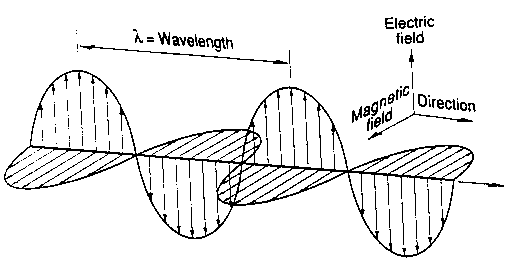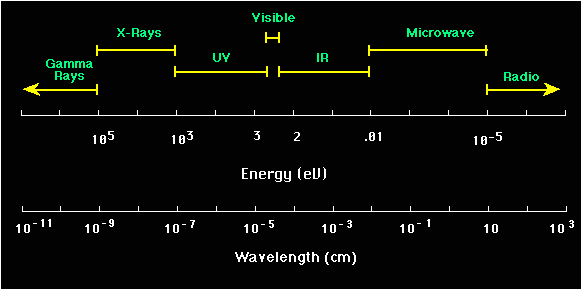 fig. 1.1
fig. 1.1Electromagnetic waves are transverse waves which do not require a medium to travel through. They propogate in a sinusodal fashoin as shown in figure 1.1.
 fig. 1.1
fig. 1.1
Electromagnetic waves are produced by exciting the charges in atoms. The vibrations occur as oscillations about the nucleus as if the electrons were bound to the nucleus by springs as shown in fig. 1.2

All of the waves in the spectrum travel at a constant velocity, c, the speed of light. In nature, as the the frequency of these waves increases, so does their amplitude. In other words, the energy of the wave goes up as the frequency goes up. These values are shown in fig 1.3.
 fig 1.3
fig 1.3
The seven basic categories for the electromagnetic spectrum as shown above are determined by their respective frequncies (fig 1.3).
 fig 1.3
fig 1.3
Each category has some unique characteristics, but the basic properities of these waves exist throughout the entire spectrum. If you would like to explore any particular category of waves in the spectrum in more detail, please visit our wave characteristics page.